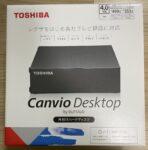Multilingual blog with Polylang: Create articles automatically translated in cooperation with Lingotek Translation
Polylang and Lingotek Translation are plugins that make your Wordpress blogs and sites multilingual.
The Polylang plugin has a function that makes it easy to manage the created articles in Japanese and other languages. By using Lingotek Translation as an add-on for Polylang, machine translators and translators can automatically create translated articles.By using these, it is not necessary to create separate sites, and it is very convenient because you can easily create and manage multilingual blogs.
Features of Polylang & Lingotek Translation
- Basic free.
- Posts, fixed pages, categories, tags, menus, widgets, etc. can also be multilingualized
- Overseas SEO compliant
- Lingotek add-on allows you to create automatically translated articles
- You will be able to select the language setting from the menu field
- The number of active installations and evaluations is overwhelmingly higher than other plugins.
The URL of the translated article can be selected from subdomain type, subdirectory type, etc. (Subdirectory type that enhances domain power like SEO is said to be good)
In the free version, the Microsoft Translator API is used for machine translation of the Lingotek add-on.You can also ask a translator to use the paid version.
Installation & setting method
Introduction of Polylang & Lingotek Translation
1. XNUMX. Add the Polylang plugin from the Wordpress admin screen.https://wordpress.org/plugins/polylang/
2.Add Lingotek plugin as well
https://ja.wordpress.org/plugins/lingotek-translation/
After installation, register with Lingotek by selecting "translation" → "Connect New Account".
Initial setup
Default language setting
First of all, set the default language and set the article so that all posts are included in the Japanese category.
"Select language"-> "Japanese-ja"-> "Add language"
URL setting
- Don't show linguistic information for the default language in URLs
Keep the domain as it is in Japanese (do not use "url / jp / on the homepage"). - The language is set from the directory name in the pretty permalink
The English version of the article / site is set to "○○○○ .com / en / post name".Articles in both languages are subdirectory type and belong to the same domain.

Browser language detection
If you search in another language, the translated page should be a hit, so it is disabled.
If you enable it, the page will be in English even though you searched in Japanese from overseas. Also, when measuring the display speed of your site from overseas servers such as google Pagespeed insights and GTmetrix, pages in other languages are measured.
Create translated articles by machine translation
Let's create an article in English.
1. XNUMX. "Language"-> "Select language"-> "English-en_US"-> "Add language"

2.Press "Upload now (↑)" in the post list to upload a Japanese article
("+" When translating into English manually (by yourself))


3. XNUMX.When the upload is completed, the icon under the American flag (English) will turn orange, so if you click it continuously, it will change as shown on the right.
"Request a translation"-> "ready to download"-> "current"
Four.When it becomes a pen mark, you will be able to edit the English version of the post.
I think that the article with the title translated into English has been added to the post list.
Precautions for translated words
The eye-catching image is off, so you need to reset it.
Also, even if the machine-translated article is reflected in the search index of google as it is, it seems that it does not hit the top.It seems better to modify not only line breaks but also proper nouns and sentences.
Although the accuracy of machine translation has improved, there are still some inadequate points.If the original Japanese article is a sentence that is conscious of "teniwoha" and the subject, predicate, object, and complement (SVOC), the translation will not be so unnatural.If there are many simple expressions, wording, and idioms, it will be difficult for the English sentence to correctly reflect the original meaning, so it seems necessary to write carefully on a daily basis.












In-Depth Discussions
Comment list
There are not any comments yet